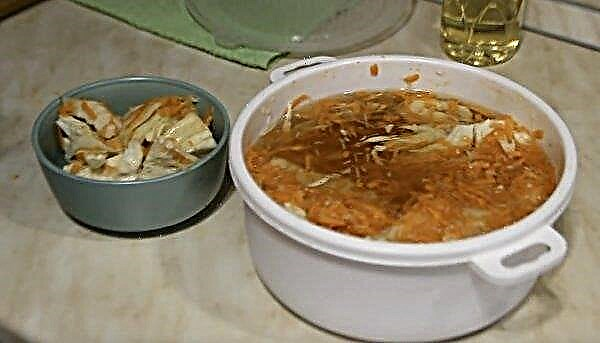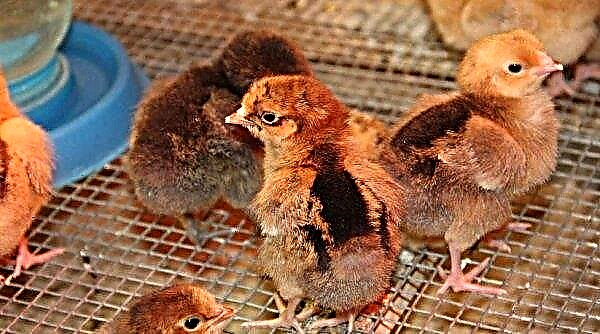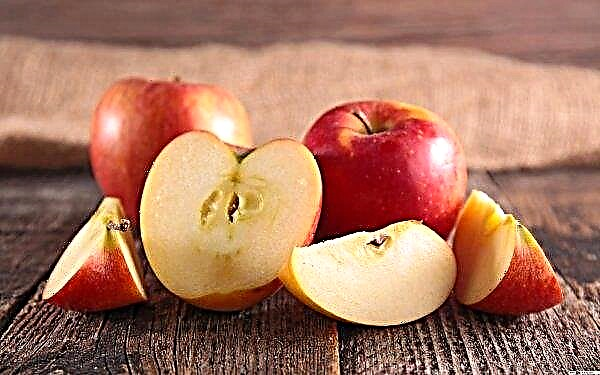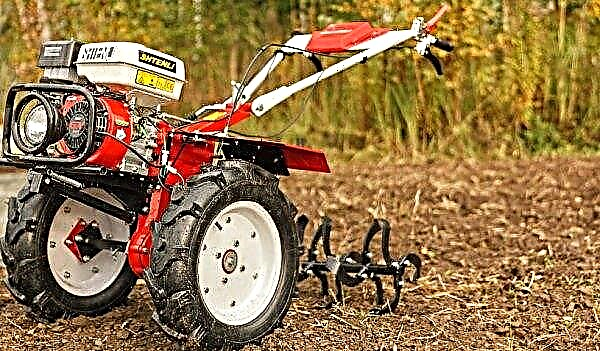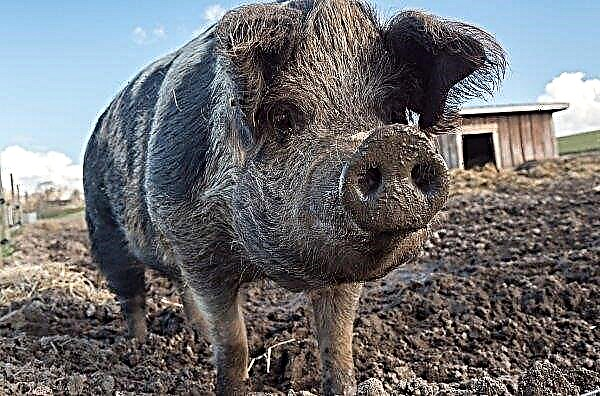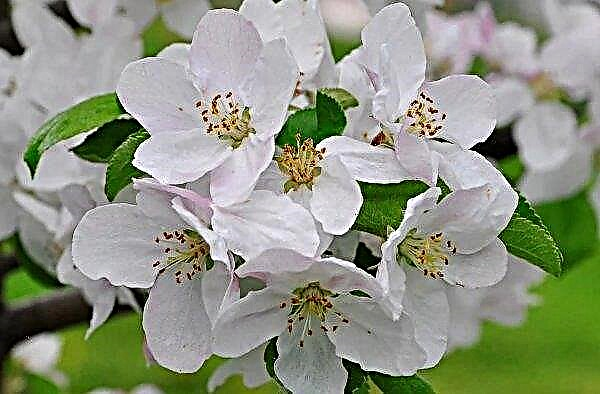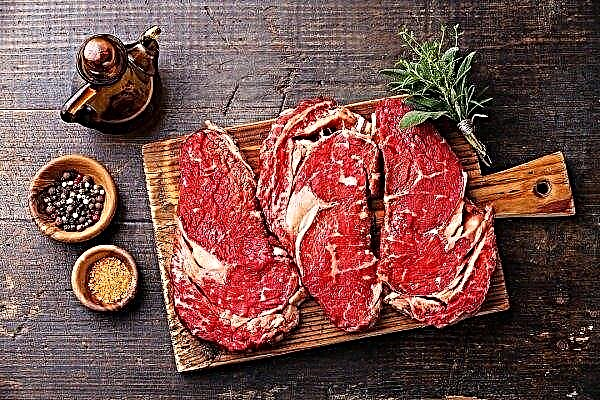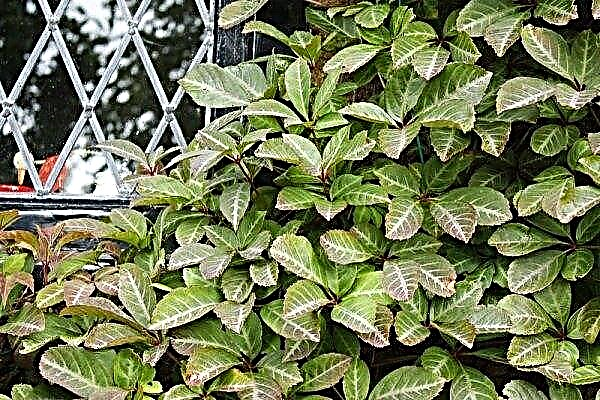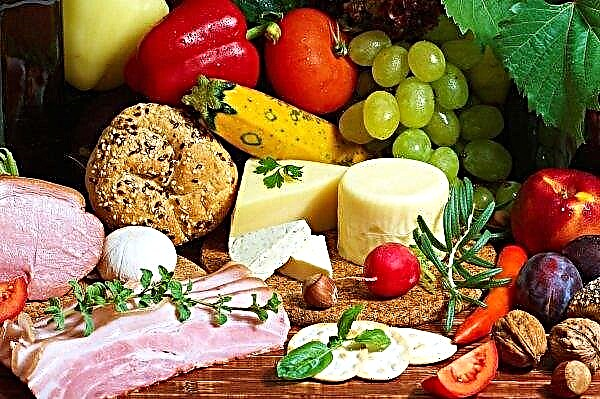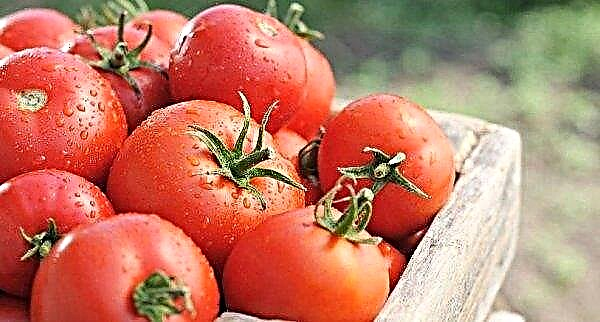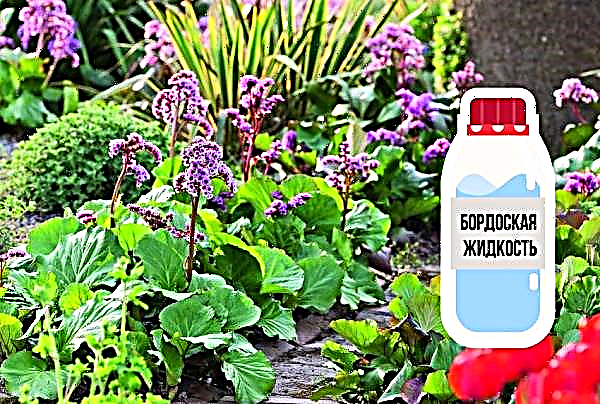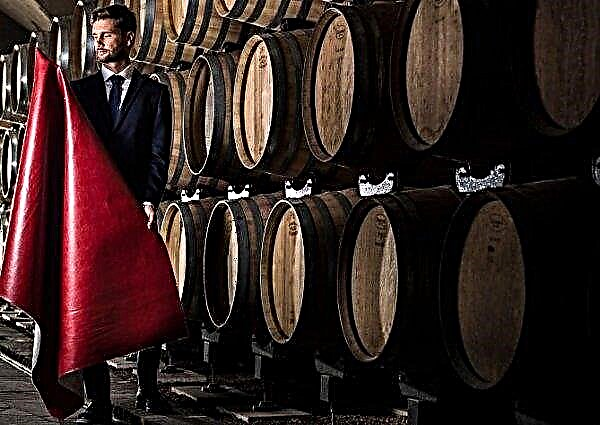The black currant Tiben is popular among summer residents and gardeners due to the many positive characteristics, including unpretentiousness regarding care. It is included in the list of promising varieties. How to properly land and how to care for him, you will learn from the article.
Description of Tiben blackcurrant variety
Before you buy seedlings and start growing any kind of currant, you need to familiarize yourself with its description, basic characteristics and recommendations for care.
The Tiben variety is suitable for growing both for personal purposes - in cottages, personal plots - and on industrial plantations. It is well adapted for growth in frosty as well as in arid conditions. After entering fruiting regularly and abundantly bears fruit for 12-15 years.
The described variety is self-fertile, but it is possible to achieve the largest and sweetest berries when grown on a plot of two or three varieties that bloom with Tiben at the same time, which can pollinate it.
Selection history
The authors of the Tiben variety are Polish breeders. Scientists have tried to achieve a high-yielding variety with delicious fruits and excellent adaptive qualities. As a result of lengthy selection work, they managed to achieve the desired result.
Did you know? Currant got its name from the old Russian word "curry", which translates as "emit a strong smell." The culture was so named because its leaves have a very sharp aroma.
Appearance, characteristics of berries, ripening time, yield
Tiben Blackcurrant bushes grow to medium height, up to 1.5 m, and grow very wide. The branches grow straight, but during fruiting, they deviate to the bottom under the weight of the fruit. The leaves can be green and dark green with a well-defined vein. They are medium in size.
During the flowering period, single or double pinkish inflorescences form. They can be short or medium in height - up to 10 cm.
Berries are formed in the middle term; full ripening is reached in July. Their maximum weight is 2 g. They are tasty, sweet-sour with a very distinct pleasant aroma. Their shape is spherical, color - black, shiny.
Fruits are used for universal purposes - can be consumed fresh and processed. Great for transportation and sales.
They include:
- Vitamin C and organic acids, which help strengthen immunity;
- zinc and magnesium, uplifting;
- Vitamin E, which gives beauty and health to skin and hair;
- volatile, cleansing the body.

Yields of bushes are marked at a high level - up to 17 tons of berries can be harvested from 1 ha. One bush per season brings about 4 kg of fruit.
Advantages and disadvantages of the variety
The Tiben variety has many positive reviews.
- Among its advantages note:
- plentiful and regular fruiting;
- high taste and marketability of the fruit;
- the ability to grow on any soil;
- resistance to drought;
- good resistance to powdery mildew, anthracnose, alternariosis, rust;
- universal use of fruits;
- good keeping and transportability of berries;
- Suitability for mechanized harvesting.
The disadvantages include only the bending of the branches during the fruiting period, which requires the installation of props in order to avoid breakage.
Agricultural technology
Planting and growing black currants is easy. The main thing is to adhere to the recommendations on landing and timely carry out the required care measures.
Seat selection and landing
Shrubs of the described variety do not impose requirements on soil composition and climate. They can grow and bear fruit when planted in any soil. The best cultivation soils are fertile loams with a neutral or slightly acidic pH (5–5.5).
But the place for growing must be well-lit by the sun's rays and sheltered from the north winds. When planted in the shade, the yield will be significantly reduced, and the fruits will form small, with a high acid content. It is important that the groundwater does not approach the surface closer than 1.5 m. Otherwise, the shrubs will often ache and wither.
You can plant bushes in 2 periods: in April and in September - early October. During spring planting, the soil is prepared in the fall - it is thoroughly cleaned of plant debris, dug up and fertilized by introducing humus (7–10 kg / m²), wood ash (1 l), superphosphate (80–100 g). At the same time, 50 × 50 × 50 cm pits are dug. It is recommended to leave half a meter between the plants, between the rows - 1.5 m.
Important! If planting is done in the fall, then the pits are prepared in 2-3 weeks. The earth is fertilized with double superphosphate (2 tbsp. L.), Wood ash (1 handful), rotted compost (5 kg).
Landing is as follows:
- At the bottom of the hole a small mound is poured.
- They put roots on it and spread them.
- Fill the voids with fertilized soil. The root neck should be 5-6 cm below the soil level.
- Tamping.
- Watering is carried out, spending 10 liters of water.
- Cover the near-stem circle with mulch from a layer of peat, humus, sawdust.
- Pruning shoots is done, leaving 2-3 buds on them.

It is important not to be late with the autumn landing. If you produce it too late, then the seedlings may not have time to adapt to winter and will not survive the frost. If the recommended deadlines are missed, planting material is best placed in cool conditions to keep it until spring.
Care
Currant bushes require standard care measures: moisturizing, fertilizing, pruning, loosening, weeding, mulching.
Freshly planted plants need to be watered daily, as they take root, gradually reducing the number of irrigations to once every 5 days. The approximate flow rate of the liquid is 20-30 l / m². The soil should be moistened to a depth of 30–35 cm. It is at this depth that the currant root system lies.
The most important periods for moisturizing: the formation of ovaries (early June), fruit filling (from late June to early July). It is correct to irrigate not just under the root, but in specially dug grooves in the near-trunk zone at a distance of 20 cm from the stem.
If recommended fertilizers were introduced into the planting pits, then the first top dressing of the bushes should be done after 3 years.
- Prior to the growing season, nitrogen is required. At this time, urea (25–40 g / bush) is added.
- In June-July, it is advisable to carry out top dressing in a foliar way three times. In this case, micronutrient fertilizers are used. They are sprayed on the foliage.
- After harvesting, phosphorus and potassium are required. During this period, you can make compost, manure, bird droppings (10-15 kg / m²), phosphorus-potassium mixtures (superphosphate - 50 g / bush) for digging.

A day after irrigation or precipitation, the soil in the near-stem zone must be loosened. This is necessary so that moisture and oxygen flow well to the root system.
Important! The root method of fertilizer is applied exclusively to moistened soil. With dry application, a burn of the root system occurs.
Weeding and mulching are also important in soil care.. Since weeds are one of the main sources of infection with diseases and harmful insects, they must be removed from the site in a timely manner. Be sure to destroy them along with the roots.
Periodically, it is necessary to cover the near-trunk territory with a layer of mulch, which will allow to maintain the necessary level of humidity, restrain the growth of weeds, and therefore, reduce the number of irrigation, cultivation and weeding.
Pest and Disease Control
Currant of the described variety is resistant to most major diseases and harmful insects.
However, with errors made during planting, as well as care, it can be affected by diseases such as:
- Septoria or spotting. When infected, gray spots with a dark border and black dots appear on the leaves. Later foliage curls and falls prematurely, shoots stop in growth. In order to prevent infection, it is necessary to follow the rules of agricultural technology, to make fertilizers containing boron, copper, manganese. For prevention and treatment, spraying is carried out with systemic fungicides, iron sulfate (3%).

- Terry or reversion. Symptoms of the penetration of a pathogen into a plant are degeneration and fading of leaves, deformation of shoots. Prevention consists in the timely destruction of the tick, which is the carrier of the disease, holding a hot "shower" in the spring. Terry can be treated with colloidal sulfur (1%), garlic infusion.

- Necrosis of shoots and branches. With the defeat of this disease, the bark loses its elasticity. Cracks form on it. Subsequently, the branches dry up and die. In order to prevent disease, it is necessary to trim in a timely manner.
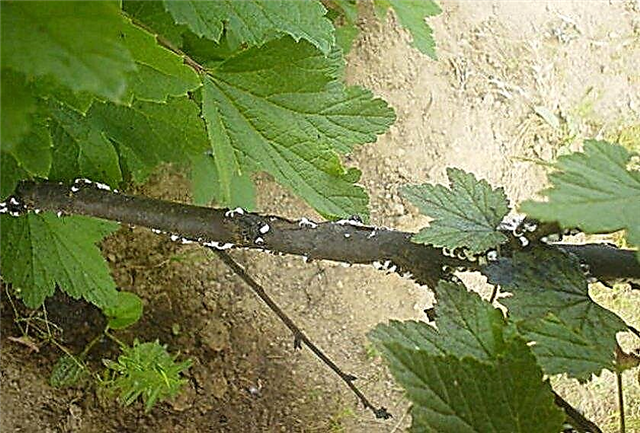
- Striped mosaic. The causative agent of this disease is the virus, which means that there is no cure for it. The main symptom is the appearance of a yellow pattern around the veins on the leaves. Since the spread of the disease are ticks and aphids, for prevention it is necessary to deal with them in a timely manner. Also, infection is possible when using the same garden tool to trim healthy and already diseased shrubs.

Of the pests can be dangerous:
- Aphid. You can find out that this harmful insect has started in the garden by swelling of brown color on the leaves, deformation and falling of foliage. Affected branches and bushes must be removed and burned immediately. Plantings should be treated with insecticides "Biotlin", "Fitoverm."

- Moth. This insect damages the buds and leaves. Planting can be cured by spraying with Kinmix and Karbofos preparations and decoctions of insecticidal plants.

- Sawfly. If leaves are found on the plant that have been eaten to the veins, a sawfly lesion can be suspected. Plants in the course of its harmful activity are greatly weakened, and the berries become small. If the presence of the parasite is detected, immediately remove and burn diseased plants. For treatment, "Actellic" is used.

- Leaflet. Insect damages flowers, green shoots. You can learn about its presence on the plant by leaves twisted into a tube. To combat leafworm, spraying with insecticides "Phosphamide", "Decis" is used. They are produced in early spring. From folk remedies, infusions of tomato and potato tops, tobacco with the addition of soap are effective.

- Spider mite. The insect leads to the formation of yellow and red spots on the leaves, the appearance of cobwebs on the ground organs, and a deterioration in the taste of the fruit. For the purpose of prevention, in the immediate vicinity you need to plant insecticidal plants: tansy, chamomile, calendula. For treatment, use "BI-58", "Fufanon."
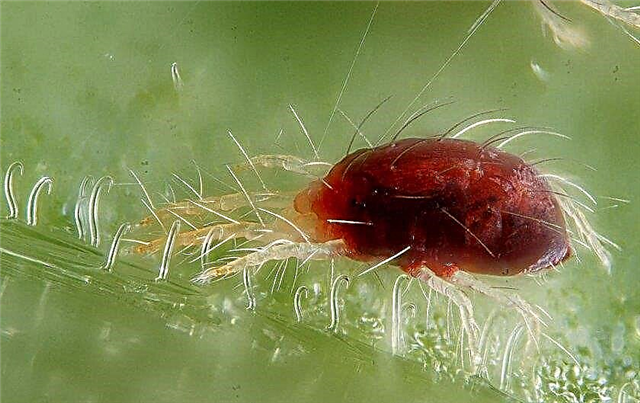
- Fire. Damaged flowers and ovaries indicate the presence of the parasite. For the purpose of prevention, weeds should be removed in a timely manner, loosen and mulch the soil, and hush the bushes. For treatment, the insecticides Actellik, Iskra, Fitoverm are effective.

- Glassmaker. Symptoms of lesion are black dots in the area of the core of the branches, moves in the shoots, weakening of plants. For the fight use treatment during the flight of the insect "Karbofosom" (0.3%). Affected shoots must be cut and disposed of by burning.

- Gallitsa. It leads to the formation of ulcers on the stems, deformation of the leaves and buds, falling flowers. In order to prevent the appearance of an insect in the garden, it is necessary to dig and mulch the trunk zone. Before the appearance of flowers should be sprayed with "Karbofos" (3%).

Trimming and shaping a bush
One of the most important measures for the care of currants is pruning. It is produced twice a season: in the fall, after harvesting the fruits, and in the spring, before the sap flow begins. In the course of spring pruning, all old branches that are dried up, affected by diseases, curved, growing inside the crown, are removed.
The bush is formed in a young plant - until it reaches 4-5 years. In the second year after planting, skeletal branches form - 3-5 strongest branches are left on each shrub, and the rest are completely removed. In July of the same year, skeletal branches are cut, making a pinch for 2 buds.
In the third and fourth years, 3–6 of the strongest are selected from the newly formed shoots, all the others are removed. In branches that are 2 years old or more, pinch the tops.In the future, they act according to this scheme:
- The branches of the third and fourth years of life are cut to 4 kidneys.
- At the branches of the second year of life, pinch the top.
- Of the shoots that have formed this year, 3-5 are left.
 Fig. 1. Currant pruning: a - annual seedling; b - a biennial bush; c, d - shortening of shoots. Fig. 2. Currant bush before anti-aging pruning (a), after it (b) and pruning of a neglected bush (c).
Fig. 1. Currant pruning: a - annual seedling; b - a biennial bush; c, d - shortening of shoots. Fig. 2. Currant bush before anti-aging pruning (a), after it (b) and pruning of a neglected bush (c).To prevent infection from entering the plant, pruning is done with disinfected garden tools. Places of cuts are subject to obligatory treatment with an antiseptic (for example, copper sulphate) and coating with garden var or RanNet paste.
Wintering
The Tiben variety has a high level of frost resistance, so it does not need special shelter. But return frosts are dangerous for him. Therefore, it is important to monitor the weather forecast, so that in the event of a sharp drop in temperature, protect the plantings by smoke or cover with a film.
In preparation for the winter, it is necessary to fertilize the bushes, pruning, cleaning the site. How to carry out each of these procedures is already described above. If very severe winters are expected, or if currants are grown at very low temperatures, you can cover it after the first frost with agrofibre.In dry autumn conditions, it is also necessary to carry out water-charging irrigation.
Harvesting and transportation of the crop, shelf life of berries
Collect black currants at a time, in rare cases, 2 calls are required. Harvesting is started when the berries have reached the color, size and taste stated in the variety description. It is important not to be late with the harvest, because every day after full ripening, taste and quality will become worse.
Harvesting must be scheduled for morning or evening, when the skin of berries is already dry from dew. You can’t clean them on a hot day, under the scorching sun. So the shelf life period will be significantly reduced.
The collection is carried out in a small container - with a volume of not more than 6-8 kg. When harvested in large containers, the fruits crumple, start up juice and deteriorate quickly. Those fruits that are planned to be transported must be cooled immediately after collection.
Harvesting black currant at home is carried out manually. Gently raise the branch with one hand and pick the berries with the other stem with the other, preferably with whole brushes. The Tiben variety is excellent for growing on an industrial scale, as it is suitable for combine harvesting.
Storage of black currant is carried out in cold conditions. At a temperature within + 10 ° C, it can lie for up to 14 days. If you place the berries in a temperature of 0 ° C and plastic bags, then the shelf life will last up to 30–45 days, -2 ° C - 90 days.Did you know? In the twentieth century for over 60 years in the United States there was a ban on the cultivation of currants and gooseberries. The reason for it was the fact that these cultures are carriers of the fungus Cronartium ribicola, which poses a huge danger to pines.
Long-term storage can be done by freezing. The term of use of the frozen product is 1 year. When frozen, all useful substances are preserved.It is not necessary to defrost berries before cooking. If you plan to use them without processing, then after removing them, you first need to place them in the refrigerator to produce a slow defrost.
So, the Tiben blackcurrant variety is promising for cultivation for personal and industrial purposes. It is unpretentious, has strong immunity, with competent planting and proper care, regularly and abundantly bears fruit.













